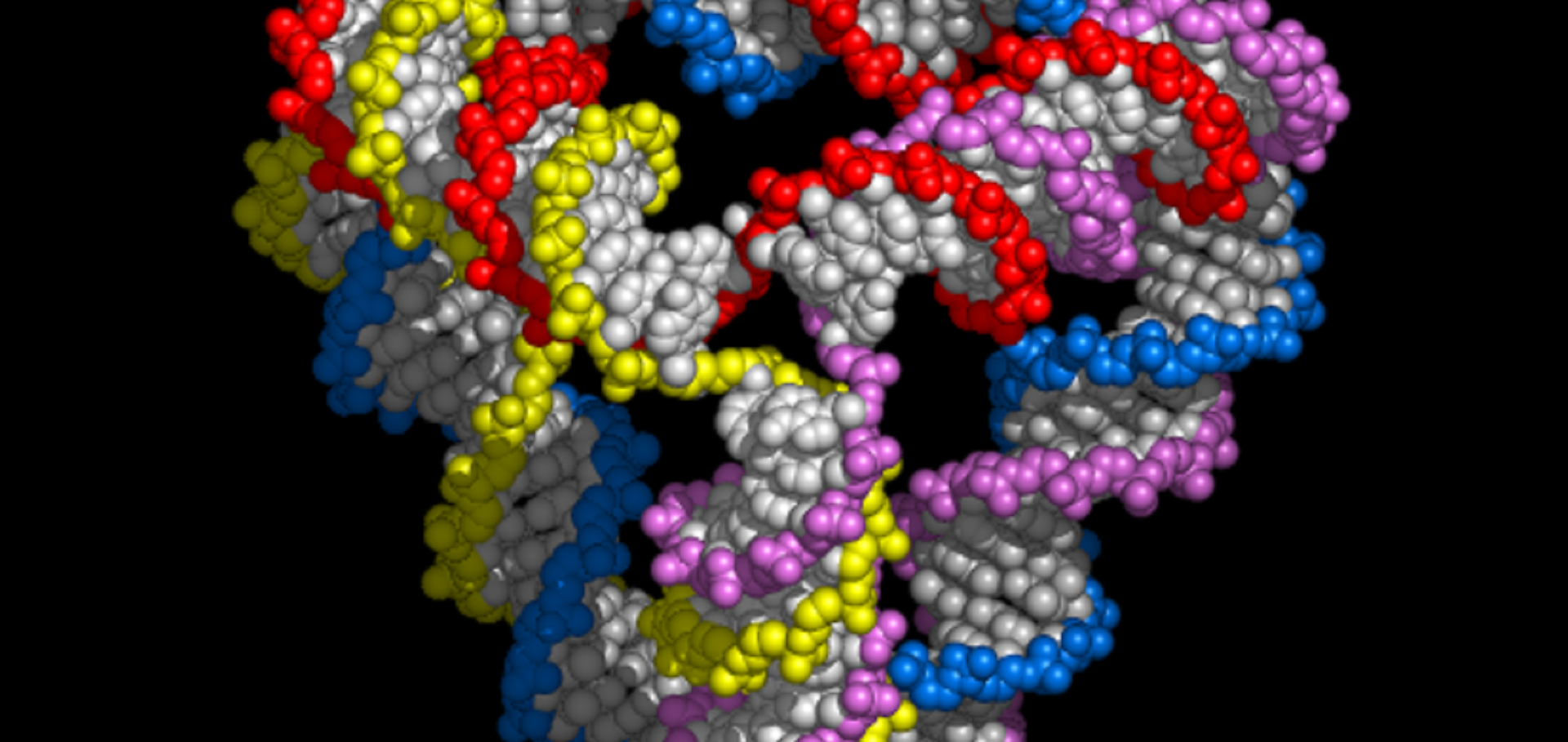Transport and self-organization across different length scales powered by motor proteins and programmed by DNA.
Nat Nanotechnol 9:1 (2014) 44-47
Abstract:
In eukaryotic cells, cargo is transported on self-organized networks of microtubule trackways by kinesin and dynein motor proteins. Synthetic microtubule networks have previously been assembled in vitro, and microtubules have been used as shuttles to carry cargoes on lithographically defined tracks consisting of surface-bound kinesin motors. Here, we show that molecular signals can be used to program both the architecture and the operation of a self-organized transport system that is based on kinesin and microtubules and spans three orders of magnitude in length scale. A single motor protein, dimeric kinesin-1, is conjugated to various DNA nanostructures to accomplish different tasks. Instructions encoded into the DNA sequences are used to direct the assembly of a polar array of microtubules and can be used to control the loading, active concentration and unloading of cargo on this track network, or to trigger the disassembly of the network."Giant surfactants" created by the fast and efficient functionalization of a DNA tetrahedron with a temperature-responsive polymer.
ACS Nano 7:10 (2013) 8561-8572
Abstract:
Copper catalyzed azide-alkyne cycloaddition (CuAAC) was employed to synthesize DNA block copolymers (DBCs) with a range of polymer blocks including temperature-responsive poly(N-isoproylacrylamide) (poly(NIPAM)) and highly hydrophobic poly(styrene). Exceptionally high yields were achieved at low DNA concentrations, in organic solvents, and in the absence of any solid support. The DNA segment of the DBC remained capable of sequence-specific hybridization: it was used to assemble a precisely defined nanostructure, a DNA tetrahedron, with pendant poly(NIPAM) segments. In the presence of an excess of poly(NIPAM) homopolymer, the tetrahedron-poly(NIPAM) conjugate nucleated the formation of large, well-defined nanoparticles at 40 °C, a temperature at which the homopolymer precipitated from solution. These composite nanoparticles were observed by dynamic light scattering and cryoTEM, and their hybrid nature was confirmed by AFM imaging. As a result of the large effective surface area of the tetrahedron, only very low concentrations of the conjugate were required in order for this surfactant-like behavior to be observed.Optimizing DNA nanotechnology through coarse-grained modeling: a two-footed DNA walker.
ACS Nano 7:3 (2013) 2479-2490
Abstract:
DNA has enormous potential as a programmable material for creating artificial nanoscale structures and devices. For more complex systems, however, rational design and optimization can become difficult. We have recently proposed a coarse-grained model of DNA that captures the basic thermodynamic, structural, and mechanical changes associated with the fundamental process in much of DNA nanotechnology, the formation of duplexes from single strands. In this article, we demonstrate that the model can provide powerful insight into the operation of complex nanotechnological systems through a detailed investigation of a two-footed DNA walker that is designed to step along a reusable track, thereby offering the possibility of optimizing the design of such systems. We find that applying moderate tension to the track can have a large influence on the operation of the walker, providing a bias for stepping forward and helping the walker to recover from undesirable overstepped states. Further, we show that the process by which spent fuel detaches from the walker can have a significant impact on the rebinding of the walker to the track, strongly influencing walker efficiency and speed. Finally, using the results of the simulations, we propose a number of modifications to the walker to improve its operation.Non-covalent single transcription factor encapsulation inside a DNA cage.
Angew Chem Int Ed Engl 52:8 (2013) 2284-2288
Combinatorial displacement of DNA strands: application to matrix multiplication and weighted sums.
Angew Chem Int Ed Engl 52:4 (2013) 1189-1192


